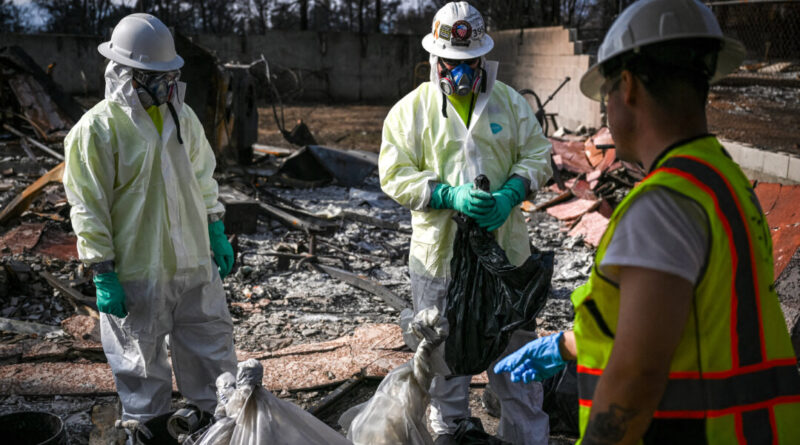EPA Conducts Largest Hazardous Material Cleanup for Wildfires in Agency History in Los Angeles
Over 1,000 personnel are engaged in the cleanup of hazardous materials across thousands of properties affected by wildfires in Los Angeles County.
The agency highlighted that it has already completed reconnaissance at 6,022 properties, 3,636 of which were affected by the Eaton Fire and 2,386 by the Palisades Fire.
“EPA is conducting the largest wildfire cleanup in the agency’s history,” stated EPA Administrator Lee Zeldin. “We are not going to delay our response for days, weeks, or months.
“With over a thousand personnel on-site, we are assisting Californians, alongside our local, state, and federal partners, in the recovery efforts in Los Angeles. The Trump administration is taking decisive action in a way that makes us proud to be part of this mission.”
So far, the EPA has removed 80 electric vehicles and bulk energy storage systems, which present considerable hazards to public safety and the environment.
The agency now has 1,050 response personnel deployed in the field—an increase from 478 last week—with an additional 280 mobilizing today. Sixty teams are being organized to clear hazardous materials from over 13,000 residential and 250 commercial properties.
Crews will address visible asbestos and inspect propane and other pressurized gas cylinders. This step is vital for ensuring safety for the public and workers before progressing to Phase 2, which involves large-scale debris removal handled by the U.S. Army Corps of Engineers, as reported by the agency.
The Federal Emergency Management Agency (FEMA) has directed the agency to identify and properly dispose of lithium-ion batteries that have been severely affected by the fires.
Residents returning to areas affected by the fires are advised to exercise extreme caution and report any suspected hazards from lithium-ion batteries to the EPA hotline at 1-833-798-7372. The agency cautions against moving or attempting to charge damaged batteries, as trained hazardous material professionals will assess them.
In collaboration with federal, state, and local stakeholders, the EPA has formed a working group to expedite cleanup operations. Responding to requests from water utilities, the agency is providing technical support to help restore water systems impacted by the disaster.
To enhance operational efficiency, the EPA has established temporary staging areas for processing hazardous waste materials for safe removal and disposal.
In response, EPA officials stated that the site selection was based on urgent public health needs, referencing their successful track record in managing such sites safely during previous disaster recovery efforts, like in Maui, Hawaii, in 2023.
The EPA confirmed that personnel will only physically remove hazardous materials and will not handle non-hazardous debris.
If property owners are present during the EPA crew’s arrival, the work will be postponed and rescheduled for a later time. If valuable items are discovered during cleanup, local law enforcement will be notified for their safekeeping.
Jill McLaughlin contributed to this report.




